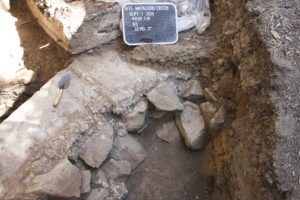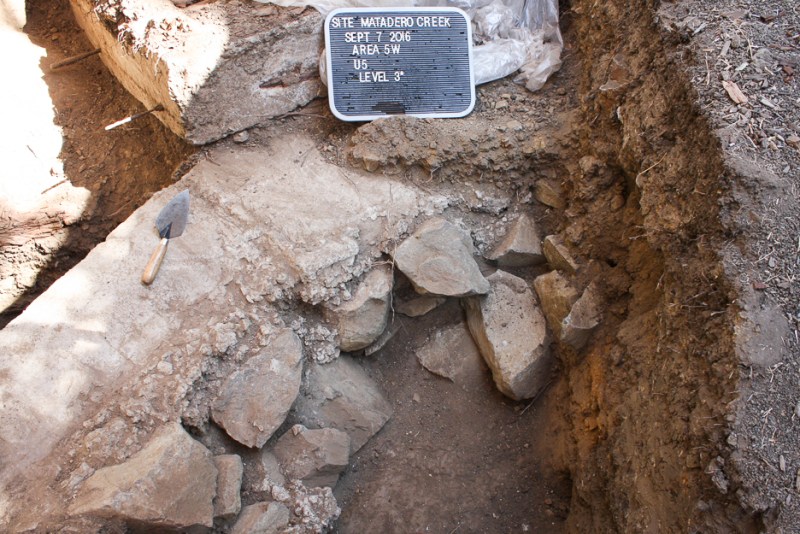A new initiative to save the California red-legged frog on campus grounds has become an archaeology project to find an old country jail west of Page Mill Road.

Since the red-legged frog was named California’s state amphibian in 2014, Stanford has decided to modify its grounds to accommodate and protect their habitats in accordance with state law. However, California legislation also requires the preservation of certain archaeological sites, prompting Stanford Grounds to begin a search for an old country jail before modifying the frog’s habitat.
University archaeologist Laura Jones describes the jail as a facility built almost entirely of concrete. The floor has a 6-foot-deep foundation, as well as solid 6-inch concrete walls. The prison resembles the outlines found in a manual on penitentiary construction housed in the archives. The main architectural objective was to reduce breakouts.
Jones currently believes that the roof was made of corrugated metal and was strapped on with steel bands to prevent criminals from escaping. The building had no plumbing and likely lacked windows as well. However, Jones said that it might have housed small stoves for heat during the winter.
Jane Stanford leased a plot of campus land approximately a mile from the main quad to the state for the prison in 1905. At the time, El Camino Real was a dirt country road that would become mucky during the rainy season. Jane Stanford leased the land believing that if the prison were built on campus, the state would pave the road.
The prison never posed a distinct danger to students. Inmates were generally criminals who served (at most) 90-day sentences for crimes like larceny, while dangerous felons would have been held in a more secure, off-campus location.
Prisoners would work in the surrounding quarries chipping rocks for road construction. The jail lasted until 1925, when the quarries were instead leased to for-profit companies that did not use prison labor. In the 1960s, all mining operations ceased after professors living in the area complained about the destructive nature of the mining industry.
Jones believes this project holds significance for students studying prison reform and the lives of inmates in the early 20th-century American west. The prison was built before reform laws were enacted to improve the lives of convicted criminals, meaning that the site bears signs of a less humane era of incarceration. Because the prison has ample documentation describing it and was built pre-reform, Jones thinks that it could eventually make for an interesting archaeological project.
The discovery of the jail also marks an intersection of archaeology and technology. When combing the area by hand failed to turn up anything, Jones overlaid the old maps found in the archives onto a modern topographical map. The university then hired a Geographic Information Systems team to employ radar technology in the area. Under a pile of debris that had been dumped in the area at an earlier time, the group noticed a soil disturbance, which turned out to be the jail.
Jones says that her job is to ensure that the jail will be available if someone wants to study it at a later date, but its future is currently undecided. If no one is currently interested in it, the jail could potentially be reburied in order to remain preserved. The fate of the old jail also depends on environmental engineering plans in the area, as well as any decision made about the California red-legged frog.
“Everything kind of depends on what they decide to do with the frogs,” Jones concluded.
Contact Josh Kazdan at jkazdan ‘at’ stanford.edu.
